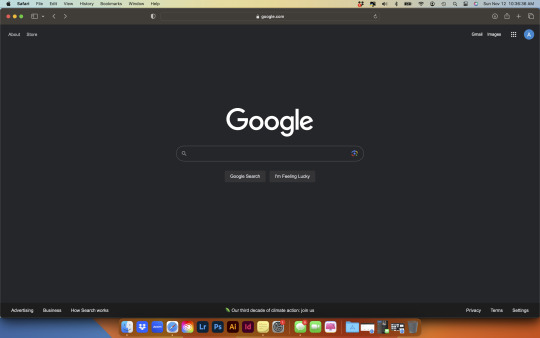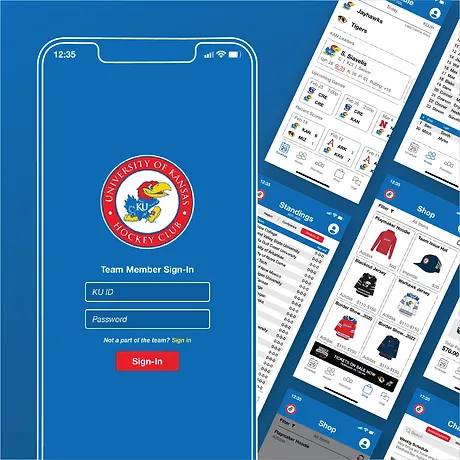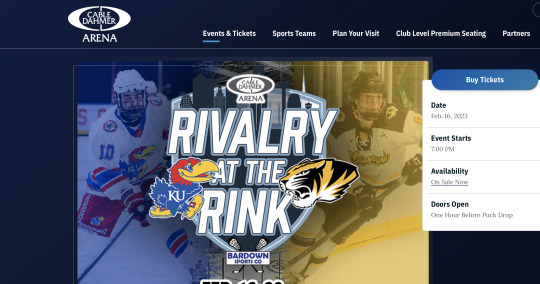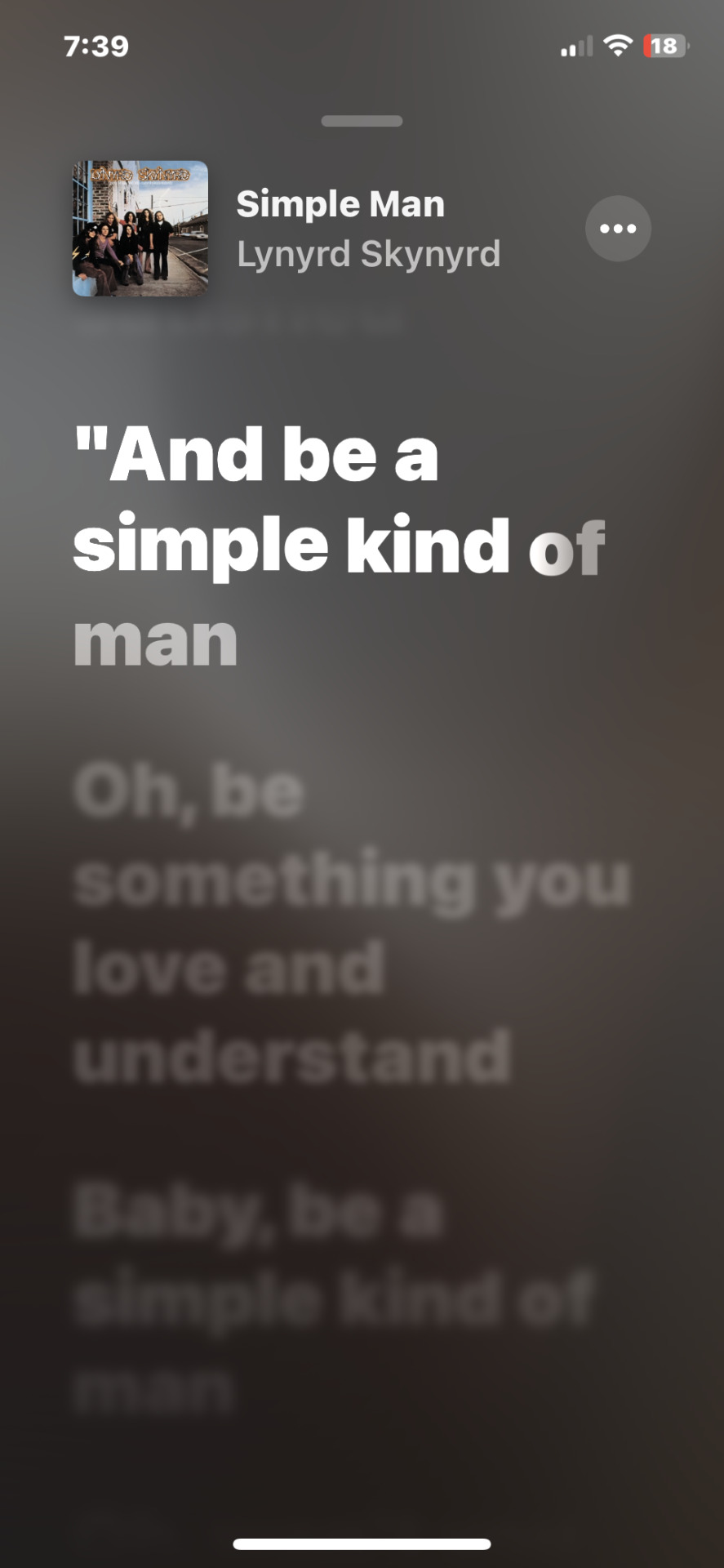Don't wanna be here? Send us removal request.
Text

The ESPN+ interface has garnered its fair share of criticism, as reflected in numerous negative reviews. Users frequently express frustration with the platform's navigation, citing issues with intuitiveness and ease of use. Some complain about a cluttered layout, finding it challenging to locate specific content or features. Additionally, buffering and streaming glitches have been recurrent problems, hindering the overall viewing experience for subscribers. Complaints also extend to the user interface's responsiveness and the lack of customization options, leaving some users dissatisfied with the overall design and functionality. While ESPN+ offers an extensive array of sports content, the user interface appears to be a sticking point for many, with negative reviews emphasizing the need for improvements to enhance user satisfaction and streamline the overall viewing process.
0 notes
Text
One standout design solution in transportation that emerged within the last five years is the widespread adoption of electric scooters in urban environments. Companies like Lime and Bird have introduced dockless electric scooters as a convenient and eco-friendly last-mile transportation option. These scooters are easily accessible through smartphone apps, allowing users to locate, unlock, and ride them for short distances within cities. The design addresses the challenges of urban congestion and provides a sustainable alternative to traditional gas-powered vehicles for short trips. With a focus on user-friendly interfaces and seamless integration with existing urban infrastructure, electric scooters offer a practical solution to the "last-mile problem," reducing reliance on cars and promoting greener commuting options. This innovative design has not only transformed the way people navigate urban spaces but has also contributed to more sustainable and efficient transportation ecosystems in cities around the world.
0 notes
Text

Global apparel brands like Nike, Adidas, and Under Armour have demonstrated a commitment to responsibility in design leadership by addressing the materials used in the manufacturing of their products. Nike, for instance, has made strides in sustainable materials and manufacturing processes, with initiatives like the "Move to Zero" campaign aiming for zero carbon and waste. Adidas has committed to using only recycled polyester in its products by 2024 and has initiatives like "Futurecraft Loop" promoting a circular economy in footwear. Under Armour has also taken steps to reduce environmental impact through sustainable material choices. These companies showcase a growing understanding that ethical and sustainable practices are integral to long-term success. As a design leader, these examples influence a commitment to incorporating environmentally friendly materials, ensuring fair labor practices, and contributing positively to the communities where products are manufactured. Balancing financial success with societal and environmental responsibility becomes a guiding principle in design decisions, aiming for a more sustainable and socially conscious approach to the apparel industry.
0 notes
Text

Tech giants like Apple, Google, and Microsoft have made notable strides in practicing responsibility in design leadership by addressing financial, societal, and environmental considerations. Apple, for instance, has committed to using 100% renewable energy in its facilities and has made design choices that prioritize product longevity and recyclability. Google has been actively investing in renewable energy projects and is dedicated to carbon neutrality. Microsoft, under the leadership of Satya Nadella, has set ambitious sustainability goals, aiming to be carbon negative by 2030. These companies showcase a commitment to environmental responsibility alongside financial success. As a design leader, these examples inspire a comprehensive approach to product development, considering the societal impacts of technology and prioritizing environmentally sustainable practices.
0 notes
Text

The Problematic Stake in the Ground example I’m using this week is the Southwest Transit Light Rail System that will connect Minneapolis, MN to Eden Prairie, MN, a suburb about 30 minutes west of the Twin Cities. The photo is a section of the light rail in Eden Prairie that narrowly passes by a residential apartment and condominium. This project began in 2019 and at the time was projected to be finished and transporting passengers this year. Since then, the project timeline has been pushed back to 2027 and the budget for it has been overrun from the original $2.20 billion to $2.74 billion to include more stops and renovate current stops along the line. The council in charge of the project and other committee members are steadfast in their beliefs of the project, but the public opinion, especially in the suburbs that the line travels through, have been declining from the onset of the project. The Office of the Legislative Auditor (OLA) audited the project in 2022 and found that the Met Council “was not fully transparent about project costs and delays” and found that the project will cost about 38% over budget (Strate, 2023).
References
Strate, J. (2023, May 3). The $2.74 billion LRT project. Eden Prairie Local News. https://www.eplocalnews.org/2023/05/03/the-2-74-billion-lrt-project/
0 notes
Text

Although the photo above is the top search result when Googling this, this photo was taken by one of my former co-workers during our media day with the new uniforms prior to unveiling. When the Minnesota Twins first unveiled their new brand and uniforms about a year ago, some of the new marks, primarily what is known as the “M Star”, was met with heavy criticism, saying it looks too much like the Miami Marlins, and copies the Minnesota United Loons, Timberwolves, Lynx, and Wild’s North Star icon in their logos. Forget about the Marlins comparison for a second here, the point of the Twins creating a mark that had a North Star in it, like the other professional Minnesota sports teams, was to include a unifying mark across all of our teams (except the Vikings). It took a lot of marketing, advertising, positioning, storytelling, etc. to help fans understand the meaning behind this alternate mark and as the season went on, I personally heard and saw more and more fans warming up to it through conversations and the attire they bought and wore.
0 notes
Text

My two stake in the ground examples this week are from my personal work over the last year or so. My first example was inspired by my time volunteering with the University of Kansas Hockey Club during undergrad.
Over the last four years, one of the biggest issues we've had within the KU Hockey Club was communication between the coaches, team, and staff. The team has their own GroupMe chat, the staff has their own Slack channel, and the coaches have their own iMessage group, but no one is willing to choose one platform and make a group chat with everyone. We also have issues with players not knowing when practice or game times are because those reminders get lost in the constant feed of messages. As a solution, I designed a mobile app where all coaches, players, and staff have access to the team side using their KU ID login credentials. On this app, members can check scores, upcoming and past games and scores, schedule, roster, stats, standings, shop for merchandise, and converse with other members either in groups or direct messages.
Fans can also download this app and sign in with their own credentials and have access to the same pages members do, except instead of messaging other members, they can fill out a contact form that goes directly to the staff, rather than waiting hours or days for a response on social media.
The link to view the whole project, description, and features can be read on my website at this link.
0 notes
Text
Cultural parameters can encompass a wide range of aspects, including language, customs, traditions, religious beliefs, social norms, etc. and it's important to understand and respect cultural parameters in various contexts, such as when interacting with people from different cultures, working in diverse teams, or conducting business internationally. I think there are some instances where parameters can be broken, and of course times where they absolutely should not be and it all depends on the situation.
In many situations, it is essential to honor cultural parameters out of respect for the people and the culture in question. Understanding and respecting these parameters can help build positive relationships and avoid unintentional cultural insensitivity or offense. While cultural parameters should be respected, there are legal and ethical boundaries that should never be crossed. For example, certain practices, such as discrimination, human rights abuses, or harmful customs, should never be excused or condoned simply because they are part of a culture.
In some cases, there may be a need to adapt to or work within certain cultural parameters, especially in a business or diplomatic context. This might involve modifying certain practices or behaviors to navigate cultural differences successfully. There may be situations where it is ethically necessary to challenge or break certain cultural parameters, especially when they perpetuate harmful practices, such as discrimination, violence, or other forms of injustice. In such cases, individuals and organizations may need to take a stand against these norms.
Balancing individual rights and cultural parameters can be challenging. Sometimes, an individual's rights should take precedence over cultural norms, particularly when those norms infringe on fundamental human rights. Promoting cultural education and awareness is essential in addressing these complex issues. It can help individuals and groups better understand when and how to navigate cultural parameters.
0 notes
Text

My second entry also relates to my time with the hockey club at Kansas where in my senior year when I was President, our arena sold sponsorship rights to a local bar for our annual rivalry game versus Mizzou without our permission. As a collegiate team/organization, like many teams/clubs/organizations at colleges across the United States, we have very strict rules when it comes to associating with drugs and alcohol. A handful of years before I began at KU, our club got in trouble by hazing underage players with alcohol and we were removed from campus for a period of time, so when I found out that our home arena, who we’re in constant contact with throughout any given season, sold title sponsorship rights to a local bar without our permission, I was forced to withdraw our team from the game and find a new arena to host the game. It took weeks, many passionate conversations with the opposing team’s coaches and staff over the eventual outcome so that both sides were pleased, we settled on a home and home rivalry series with each team hosting the other at their campus instead of just a single event in Kansas City. The event proved to be very beneficial to both clubs both from a PR and financial standpoint. I was very proud of my staff for working tirelessly to help find a new venue, work out solutions, and still create a can’t miss event at a much less desirable arena.
0 notes
Text


Both of my entries for this week’s visual diary are going to be from when I was in undergrad at the University of Kansas. While at KU, I volunteered with the club hockey team designing merchandise and uniforms. Before I got to KU and joined the growing staff, no one had spearheaded selling merchandise. I was willing to reach out to vendors and build a website if needed to get our fans merchandise, knowing it could be our primary source of revenue each season given we didn’t charge for admission and concession stand revenue went to the arena, not us. My first year I was able to get stores set up with numerous vendors for a variety of items and we were consistently selling 100s of items each season, then COVID-19 gripped the world and canceled a season and a half of ours, and many other teams around the nation. We, like many, didn’t know how we’d turn a profit and be able to play the following season if we didn’t make money to support our operating costs due to not having a season. So although the pandemic was awful in many ways for so many people all over, it forced my team and I to find new ways to market and sell to our current fans, and reach new ones all over the country. After my four years at KU, we sold over $45,000 worth of merchandise, more than quadrupling the amount of money the University aids us with each season. Upon graduation, our coaching staff and university representatives told my team and I that without the massive amounts of sales over the years, especially during the off-seasons from COVID-19, the future of the club was seriously in doubt.
0 notes
Text

The Nest Thermostat is a shining example of innovation in the field of home automation and a testament to enhancing user experience through intuitive design. At its core, the Nest Thermostat's innovation lies in its ability to learn and adapt to user preferences, optimizing energy consumption and comfort seamlessly. One of its key features is the ability to learn users' schedules and temperature preferences. Over time, it creates a customized heating and cooling schedule that maximizes energy efficiency while ensuring a comfortable living environment. This learning capability not only reduces energy bills but also simplifies the user's interaction with the thermostat. The device's user interface is another highlight. It boasts a sleek, minimalist design with a vibrant display that provides real-time feedback on temperature settings and energy usage. Its compatibility with smartphones and voice assistants like Google Assistant and Amazon Alexa further enhances user convenience, allowing remote control and voice commands. The Nest Thermostat integrates with a wide range of HVAC systems and smart home devices, making it a central hub for home climate control. This interoperability contributes to a holistic and interconnected smart home experience.
0 notes
Text

The Tesla Model S is a pinnacle of automotive innovation and an exemplar of user-centric design in the electric vehicle industry. Innovation is woven into every aspect of its existence, offering a transformative driving experience and setting new benchmarks. At the heart of the Model S's innovation lies its electric powertrain. The car's all-electric architecture eliminates tailpipe emissions and reduces the carbon footprint. With cutting-edge lithium-ion batteries and advanced energy management systems, it boasts an impressive range, redefining EV capabilities and addressing range anxiety. The Model S also leads in autonomous driving technology. Tesla's Autopilot features offer adaptive cruise control, lane-keeping assistance, and even self-parking capabilities, pushing the envelope of self-driving possibilities. The vehicle's interior is a testament to user experience design. The minimalist dashboard features a massive touchscreen interface that controls nearly every aspect of the car, from climate control to entertainment. This not only reduces clutter but also allows for over-the-air software updates, ensuring continuous improvements and new features. The car's sleek and aerodynamic design enhances both aesthetics and efficiency, offering a low drag coefficient and industry-leading performance. The Ludicrous Mode option allows the Model S to accelerate from 0 to 60 mph in under 2 seconds, redefining the perception of electric vehicle performance.
0 notes
Text

I wasn’t sure what was meant by an abstract design leadership tool so after reading the course materials and doing some research online, I figured that some abstract design leadership tools I can expand on in my daily life would be to lead with compassion and enthusiasm. I tend to think I already exude those qualities, but not to the level I believe they need to be to effectively use them to lead a team of creatives, which is good because I don’t lead a team quite yet. Something I came across in reading was the idea of empathy marketing, which is the idea that if companies can look through their clients’ eyes and understand their desires, they will be better able to tailor their offerings and gain a competitive advantage. The same can be said for product designers, like myself, when creating products with the users goals in mind. A great example of this would be if you open Spotify or Apple Music and want to sing along to a song, you can click the lyrics icon and know exactly what words come next in every single song. In this example, these streaming services empathized, or had compassion, for their users wanting to use their app for karaoke nights, singing in the car, or any other situation where some vocal guidance was required!
0 notes
Text


Adobe Firefly & Generative AI
One tool that I started using on a consistent basis the last few weeks at work and on personal projects was generative AI, a new update for Photoshop that completed beta testing and was rolled out completely to subscribers. With this tool, you can select an area of a photo and type in a description of what you want added, and Adobe Firefly will create various versions of your description within your photo. You can also upload a photo to photoshop, expand the crop boundaries, and generate similar surroundings to expand the composition, which is what I have pictured in this post.
Being able to expand the view of the camera lens and add subjects and events to photos without having to go back into the field and recapturing the moments you want to create is a huge asset to me and many designers. Of course, there are drawbacks to using AI, considering it’s not your original work, your manipulating a scene, etc. for professional or personal gain, but so far, with what I’ve used it for, I find it’s a valuable tool that many young designers and photographers can use to help get their ideas out of their head and onto the screen!
0 notes
Text


Statistics that I found when conducting preliminary research show that 47% of Americans admit they’re addicted to their phones, the average American checks their smartphone 352 times per day, 71% of people spend more time on their phone than with their romantic partner, almost two-thirds of children spend 4+ hours per day on their smartphones, 44% of American adults admit that not having their phones gives them anxiety, and cell phones cause over 20% of car accidents (Howarth).
According to an article from Verizon, “every cell phone user is at risk of developing an addiction to their device, [but] teens are more likely to become addicted to cell phones than any other age group. According to a study published in Frontiers in Psychiatry, adolescents under 20 years old are the most at-risk for cell phone addiction because this age group is more likely to experience behavioral problems” (Cell Phone Addiction).
Teens are the most at-risk group “because they haven’t developed self-control skills yet. Media management for teens may be nonexistent and the same study found that about 27% of smartphone owners between 11 and 14 years old never turn their cell phones off, even to sleep” (Cell Phone Addiction). Verizon notes a few risk factors for cell phone addiction that include anxiety, depression, low-self esteem, introversion, a lack of self-control and the inability to control one’s impulses (Cell Phone Addiction).
Technology addiction can be considered a behavioral addiction due to the “neurological changes that take place in the brain while being online” (Mally, 2023). A behavioral addiction can be defined as a progressive inability to control, regulate, or limit the behavior, meaning technology addiction also shares similarities with obsessive-compulsive disorders, gambling, and sex addictions. Technology addiction includes more than just doom scrolling on social media though, with an increase in access to video games, social networking, and surfing the internet” (Mally, 2023). Before getting into the negative effects technology has on young adults, it’s important to note how much easier, more efficient, safer, and advanced we as a species have become due to technology, but it also has its cons. According to Sandstone Care, technology addiction can “negatively affect our sleeping habits, communication and relationships, mental health, and physical health… [and] often distracts us from important things and tasks and decreases the time we spend with face-to-face interaction” (Mally, 2023). Physical and mental defects to technology addiction include “headaches, neck pain, poor hygiene, sleep problems, weight gain, eye problems… processing information, social skills, and problems at work, school, or in relationships” (Mally, 2023). Some of the most damaging effects of being addicted to screens are the effects they can have on brain development. According to the National Institute on Drug Abuse, “the ABCD study revealed that kids who used screens for more than 7 hours a day had a thinner cortex, [which is the area of the brain that processes information] than those who used screens less. Too much screen time has also been associated with a higher risk of developing mental health disorders, such as depression or anxiety” (Mally, 2023). Tactics to help people struggling with technology addiction before seeking treatment can be to avoid screen-time at night, turn off your phone during meals, turning off notifications*, and setting time limits for apps, or devices in general.
*It’s important to turn off notifications, or turn your sound on, not just muting them, because when your phone is muted you’re more likely to obsessively check your phone for updates instead of just leaving your phone in your pocket until your sound haptics go off.
References
Cell Phone Addiction: What You Need to Know. (n.d.). Verizon.com. Retrieved September 10, 2023, from https://www.verizon.com/articles/cell-phone-addiction/#:~:text=To%20prevent%20cell%20phone%20addiction
De Guzman, C. (2023, August 3). China Wants to Limit Children’s Smartphone Use to Combat Addiction. Here’s What to Know. Time. https://time.com/6301185/china-smartphone-addiction-children-limit/
Howarth, J. (2022, July 26). 57+ Incredible Smartphone Addiction Statistics for 2023. Exploding Topics. https://explodingtopics.com/blog/smartphone-addiction-stats#
Mally, C. (2023, February 12). Technology Addiction - Teen & Young Adult. Sandstone Care. https://www.sandstonecare.com/blog/technology-addiction/#:~:text=Technology%20can%20negatively%20affect%20our
Sneed, A. (2022, February 8). I’m Addicted to My Phone. How Can I Cut Back? The New York Times. https://www.nytimes.com/2022/02/08/well/live/smartphone-addiction-tips.html
1 note
·
View note
Text
MPDC 5043: Module 2, Week 3 - Visual Diary 5
For your fifth visual diary assignment, instead of finding examples of existing designs, we'll focus on what can be learned from the design process, specifically your ethnography assignment. Please post photos and/or short videos of the subjects you speak with describing their tension points with the topic you selected. You might want to write about some or all of the following:
How did you approach the questions you asked?
How did you get the subject to talk more about their tensions?
Which methodology and/or resources did you find most useful in conducting the ethnography?
I tried to be very blunt with my questions, asking if they felt they were addicted to a device or app, how much screen time they think they use per day and per week, and then looking at how much they actually use, ways they try and combat using their phone too much, and what their plan or goals are for achieving those goals.
The people I’ve talked to so far are my parents, friends, and coworkers so they’ve been pretty open about talking about their device usage or ways they try to limit screen time when I was a kid, or for my coworkers' kids.
I found just talking about the situation, not incriminating or accusing anyone of being addicted to a device or devices, and backing up my questions and their concerns with facts and some of the preliminary research I’ve come across the past few weeks.
1 note
·
View note
Text

The second example I came up with for this visual diary entry is volunteer firefighters. In many rural areas, volunteer firefighters often serve as equals, working in their community day-to-day with their peers and when the time comes, as a firefighter to protect their community. These individuals undergo training and dedicate their time voluntarily to the fire department, creating a cooperative environment where they both work in and protect their community.
1 note
·
View note